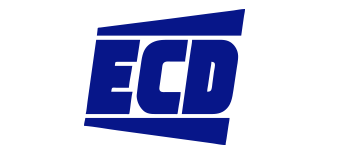Accurately Measuring Dissolved Organic Loads With UV-80 Sensor Using Optical Absorbance Technology
Anaheim, CA—January 18, 2023—Measuring dissolved organic loads at municipal drinking water or wastewater treatment plants, as well as in industrial plants treating water, the innovative UV80 Dissolved Organics Sensor from Electro-Chemical Devices (ECD) lets users choose to install only the sensor or add ECD’s S80 Universal Transmitter or its LQ800 Controller, or other control systems via the sensor’s Modbus compatible serial communications.
The UV80 Dissolved Organics Sensor is the ideal solution for a wide range of water analysis applications from dirty wastewater or storm water treatment processes to stored surface water or treated water or drinking water. The highly intelligent and reliable UV80 Sensor is also the perfect measurement sensor for industrial processes and systems requiring sanitary organic-free water such as food/beverage, pharmaceutical, electric power generation and semiconductor plants.
The UV80 Sensor not only helps engineers and technicians ensure water quality, but it also supports water re-use applications, such as boiler make-up water in electric power generation systems that rely on super-heated contaminant-free steam from large boilers. Many industrial processes, including cooling fans in oil/gas refineries and specialty chemical plants, also employ water re-use processes requiring water effluent decontamination to reduce water consumption and to protect the environment by meeting clean water regulations.
With its state-of-the art UV 254 nm optical sensing technology, the powerful UV80 Sensor relies on optical absorbance technology to measure organics in water. A UV source produces UV light radiation that passes through the optical path. The receiver analyzes the UV pulses at two different wave lengths, a measurement wavelength (254 nm) and a reference wavelength which is not influenced by the presence of organic compounds.
UV80 Sensor Monitors Dissolved Organic Loads
Typically dissolved organic substances, such as bio-solids or organic chemicals, have unique spectral characteristics capable of absorbing UV light at the wavelength of 254 nm. The light source designed into the UV80 Sensor emits UV light radiation that passes through the sensor’s optical path when in organic laden water. The receiver analyzes the UV pulses at two different wave lengths, a measurement wavelength (254 nm) and a reference wavelength which is not influenced by the presence of the organic compounds.
With its simple one or two-point calibration option, the UV80 Sensor can be pre-set at the factory or easily changed in the field by technicians with minimal training. The sensor’s low set point range is up to 370 mg/L (COD equivalent). The high-range set point is up to 1000 mg/L (COD equivalent). When the contaminant level exceeds the preset ranges, the sensor electronics send an alarm signal to the transmitter, PLC or controller.
Designed with rugged stainless steel construction, the UV80 Sensor meets IP68 requirements for ingress protection and operates over a wide temperature range of 41 to 113oF (5 to 45oC). This sensor features an advanced, automated wiper lens cleaning system, which keeps it clean in dirty fluids to avoid manual maintenance. It offers years of reliable, trouble-free service in demanding industrial process wet environments for a low total cost of ownership.
The flexible design of the UV80 Sensor features built-in RS485 serial communications and is Modbus/RTU compatible. Users can choose from ECD’s two-channel T80 Universal Transmitter or ECD’s eight-channel LQ800 Controller, or a wide range of RS485/Modbus compatible third-party controllers. Up to eight LQ800 Controllers can be networked to support large plant systems.
When the UV80 Sensor is connected to the versatile ECD T80 Transmitter or the ECD LQ800 Controller, the sensor’s information is automatically uploaded to the analyzer. It then configures the displays and outputs of the transmitter to the values appropriate to the sensor’s organic detection measurement parameters.



